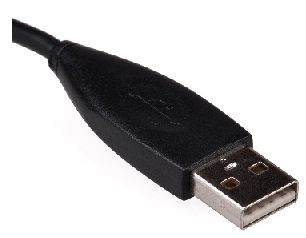Every day, you use this term don’t know for how many times, but how many of you really know what does the term “USB” stand for. USB is actually an acronym or an abbreviation for the term “Universal Serial Bus”. USB is a hardware interface, which was developed in an aim to connect peripheral devices like computer mouse, keyboards, printers, digital cameras, scanners, PDAs and MP3 players to PC and laptops. Initially what computer manufacturers used to do was, they first began to replace the serial and parallel ports with USB ports. This was done long back in 1997, but today, every single device in the market like PC and laptops contain at least 4-5 USB ports for USB connections. These ports allow easy connectivity options for connecting cameras, iPods, portable music players, mobile phones, tablets and many more.
The devices are connected to laptop and PC via USB cables and can also be connected to each other via USB connectors. USB cables or connectors are cabled products, which are used to connect data devices with each other for data visualization and transfer. You might be wandering what is the typical transmission speeds for USB cables. Ideally, the transmission speeds of USB connectors vary from each other because the cables are classified into two different bandwidth groups. The first type is “1.1”, with a 1.5 Mbit per second data transfer rate, and the second type is “2.0”, which transfers data at a maximum rate of 480 Mbit per second. Confused, where and how to use them? USB 1.1 supports lower data transmission and USB 2.0 supports higher data transmission. The USB 2.0 can be used for lower data transmission requirements of 1.1; however, the substitution can’t be reversed. USB 1.1 just can’t deliver the rate of data transfer which USB 2.0-rated devices need.
Besides, classification as per bandwidth, USB cables are also classified as per speed limitations. Ideally, they fall in two speed categories: low speed and full speed. The speed specifies the amount of bandwidth they need to operate, whether low or high. Low speed rating indicates that the connected device requires minimal bandwidth, meaning a bandwidth of 1.5 Mbit/s in order to function and therefore, the device can be used in conjunction with either 1.1 or 2.0 USB cable. Computer keyboards and mouse are a few examples of low speed devices. Full speed labeled devices need a minimal signal rate of 12 Mbit per second. This is a very common bandwidth requirement and almost all USB hubs in the market are designed to support full speed. From affordable laptops, tablets, mobile phones to the most expensive high end hifi equipment, all devices are compatible with full speed USB cables. Even when the data transfer speed is higher, full speed USB cables transmit signal equally as low speed USB cables. The USB cables fall in another category, i.e., High Speed USB devices. Such type of devices run at 480 Mbit per second and require a 2.0-rated USB cable for interference free signal transfer.



